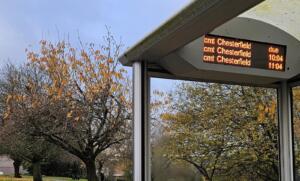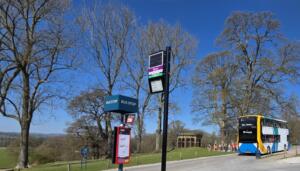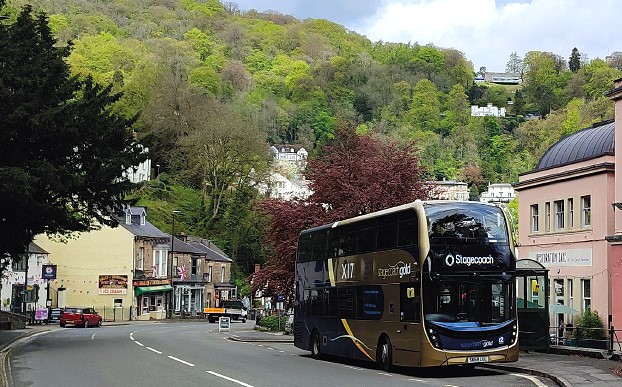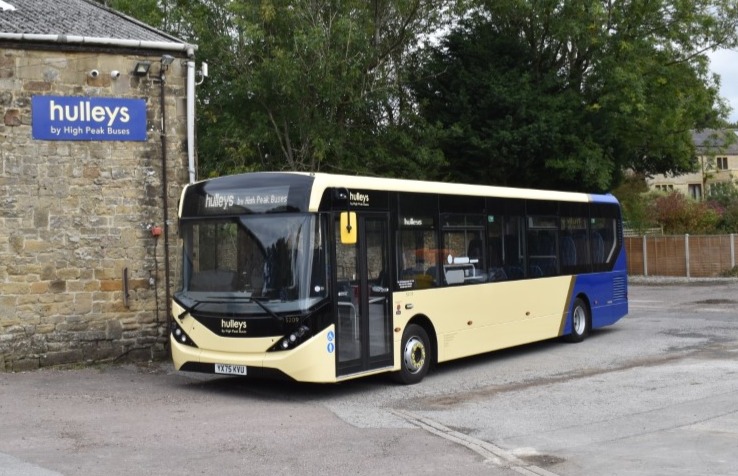30th July 2025
Real Time Information Displays
What Are They?
Real Time Information (RTI) displays are an increasingly visible presence at bus stops around Derbyshire since their introduction seven years ago, with over 400 in the system and more scheduled later this year.
The displays use a mixture of technology, either a red dot-matrix LED or TFT (similar to a computer screen) display and even solar powered E-ink interfaces. The aim is to reassure passengers that their bus is on its way with a ‘real time’ arrival prediction time for each specific stops. It can also inform travellers if the bus has been delayed or cancelled. This service is especially helpful for passengers without smartphones who wouldn’t otherwise have access to the real time status of their bus through apps and online updates.
So how do they work?
If you think of the bus and the RTI unit as two mobile phones texting each other, that isn’t too wide of the mark.
Along its route, the bus sends out a series of what are effectively text messages pin-pointing its GPS location of the vehicle. This is then picked up by the system, which predicts the journey ahead and sends the data out to other RTI enabled devices further along the route. The calculations are based on the bus’s scheduled timetable, position, speed and any other factors that could affect its progress along the route. Clever stuff, eh?
How are they powered?
Currently, most displays are powered by mains electricity, but as part of Derbyshire County Council’s Journey to Net Zero carbon reduction policy, new RTI boards are being powered where possible by solar panels. These are cheaper, quicker and easier to install but engineers must factor in the panels’ location to determine their suitability.
For example, is the site shaded by tall buildings or trees? Does it have a reliable mobile signal to enable a sufficient data transfer between the vehicles & the display? Is the stop frequented enough to justify the outlay?
The solar powered boards use a display more like the one you would see on a Kindle device, which uses much less energy to operate.
Can I request an RTI board for my nearest stop?
Yes. Any Derbyshire resident or business can get in touch to suggest potential locations for an RTI display within the county, and it will be considered by the team.
You can make a request by contacting Call Derbyshire on 01629 533190 or you could ask your local Councillor to submit one on your behalf. Contact details for all County Councillors can be found here.
Businesses find great benefit from having RTI nearby as it gives their customers confidence to continue their shopping, knowing the bus is on its way, so there’s just enough time for one more coffee… or beer if you’re having a night out by bus!
What’s next then?
Derbyshire County Council are planning to roll out many more displays countywide and following successful installations in places like Buxton, Hadfield & Chatsworth Park, new E-ink signs have been scheduled for Kilburn, Willington and Doveholes.
You may have seen the super-sized RTI ‘totems’ near transport hubs and interchanges, displaying bus and sometimes even train times plus other local information for visitors. We already have several in the county (Long Eaton, Ripley, Matlock & Belper) and we are planning another six of these eye-catching information screens coming soon to Alfreton, Ashbourne, Bolsover, Chesterfield, Glossop and Willington.
Look out for the latest display at a bus stop near you – and enjoy your journey!
(Written by Mark Sheldon, with additional information from Rob Fryer)






